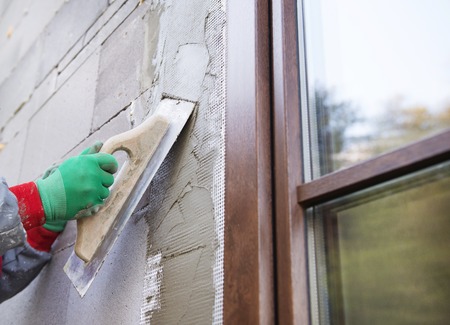1. Importance of Seasonal Maintenance
Keeping your windows and doors in good shape should be a regular part of your seasonal home maintenance routine. Just like cleaning out gutters or servicing your HVAC system, checking your windows and doors can help maintain the comfort, energy efficiency, and safety of your home. Ignoring these areas can lead to drafts, higher energy bills, and even security risks.
Energy Efficiency and Lower Utility Bills
One of the main reasons to perform seasonal maintenance on windows and doors is to improve energy efficiency. Gaps in window seals or door frames can let cold air in during winter and cool air out during summer, forcing your heating and cooling systems to work harder. This not only increases your energy usage but also drives up monthly utility bills.
Common Issues That Affect Energy Efficiency
| Issue | Impact | Recommended Action |
|---|---|---|
| Worn weatherstripping | Allows drafts and heat loss | Replace with new weatherstripping seasonally |
| Deteriorating caulk around frames | Lowers insulation effectiveness | Reapply caulk in spring or fall |
| Poorly sealed glass panes | Loses thermal efficiency | Inspect and reseal or replace if needed |
| Warped or damaged door frames | Affects closure and security | Repair or replace to ensure proper fit |
Enhancing Comfort Year-Round
No one likes feeling a draft while sitting near a window or waking up to condensation on the inside of glass panes. Seasonal maintenance helps ensure that indoor temperatures stay consistent, keeping you comfortable whether its freezing outside or scorching hot. It also prevents issues like mold growth caused by trapped moisture or poor ventilation.
Saving Money Over Time
A little effort each season can prevent bigger, more expensive problems down the road. Fixing a minor leak now is much cheaper than replacing an entire window frame later. Plus, well-maintained windows and doors contribute to the overall value of your home—something especially important if you plan to sell in the future.
The Long-Term Payoff of Regular Maintenance
| Maintenance Task | Short-Term Benefit | Long-Term Benefit |
|---|---|---|
| Tightening loose hardware | Smoother operation & better seal | Avoids replacement costs later on |
| Cleansing window tracks & screens | Easier use & cleaner indoor air | Keeps parts functioning longer |
| Inspecting locks and latches | Keeps your home secure today | Lowers risk of break-ins over time |
| Patching small cracks or gaps early | Keeps drafts out now | Avoids structural damage later on |
By making window and door maintenance part of your seasonal checklist, youre not just preventing problems—youre investing in a more efficient, comfortable, and cost-effective home environment all year round.
2. Inspecting for Weather Damage and Wear
Seasonal changes can take a toll on your windows and doors. From heavy rains in spring to extreme heat in summer, followed by chilly winds in fall and winter, each season presents its own set of challenges. That’s why it’s important to inspect your windows and doors regularly to catch any signs of damage early.
What to Look For During Your Inspection
Here are some common signs of wear you should check for:
| Issue | What It Looks Like | Why It Matters |
|---|---|---|
| Warping | Frames that look bent or don’t close properly | Can lead to drafts and poor insulation |
| Cracks | Visible splits in glass, wood, or vinyl | May cause air leaks and reduce security |
| Leaks | Water stains, moisture between panes, or puddles near the frame | Mold risk and potential structural damage |
| Deteriorated Seals | Dry, cracked, or missing weatherstripping around edges | Reduces energy efficiency and lets in outside air |
| Rust or Corrosion | Discoloration or flaking metal parts like hinges or locks | Affects operation and weakens security features |
How Weather Affects Materials Year-Round
The materials used in windows and doors—such as wood, vinyl, aluminum, and fiberglass—react differently to seasonal shifts:
- Wood: Expands with humidity and contracts in dry conditions, leading to warping or cracking.
- Vinyl: Can become brittle in cold weather, increasing the chance of cracks.
- Aluminum: Conducts heat easily; may cause condensation issues during temperature swings.
- Fiberglass: More stable across temperatures but still needs seal checks.
Pro Tip:
If you feel a draft when standing near a closed window or door, its a sign that somethings not sealing properly—even if visible damage isnt obvious. Use a lit candle or incense stick to detect airflow around frames.
Dont Forget Hardware!
Latches, locks, hinges, and handles can loosen over time due to temperature fluctuations. Make sure everything is tight and operates smoothly. Lubricate moving parts with silicone spray if needed.
A quick seasonal inspection can save you from expensive repairs down the road—and help keep your home more comfortable year-round.

3. Boosting Security Through Regular Checks
Seasonal window and door maintenance isnt just about comfort and energy savings—it also plays a crucial role in protecting your home. By regularly inspecting locks, latches, and frames, you can catch small issues before they turn into major security risks. These routine checks help ensure that every entry point is secure, reducing the chance of unauthorized access.
Why Seasonal Inspections Matter
Weather changes throughout the year can cause materials to expand or contract, which may affect how well windows and doors close or lock. Moisture from rain or snow can also lead to wood warping or rust on metal parts. A quick seasonal check can reveal these problems early so you can fix them before they compromise your home’s safety.
Common Issues to Watch For
| Component | Potential Issue | What to Do |
|---|---|---|
| Locks & Latches | Rust, loose screws, misalignment | Tighten screws, lubricate mechanisms, replace if needed |
| Window Frames | Warping, gaps, wood rot | Seal gaps with caulk, repair or replace damaged sections |
| Door Hinges | Squeaking, sagging, rust | Oil hinges, tighten screws, replace worn parts |
| Glass Panes | Cracks or chips that weaken structure | Replace broken panes to maintain strength and insulation |
Simple Tools You’ll Need
- Screwdriver set
- Lubricating spray (like WD-40)
- Weatherproof caulk or sealant
- Flashlight for spotting hidden damage
- A notepad to track what needs repairs or replacement
Pro Tip:
If your door feels loose when it’s shut or you notice a draft around your windows, those are signs your hardware might need attention. Don’t wait until it becomes an open invitation for burglars—fix it during your seasonal maintenance routine.
4. Enhancing Insulation and Energy Efficiency
Keeping your home comfortable throughout the year starts with making sure your windows and doors are properly sealed. Seasonal maintenance not only boosts energy efficiency but also saves money on utility bills. Here are some easy tips to help you improve insulation and energy performance in your home.
Seal Gaps and Cracks
Even small gaps around windows and doors can let in drafts, moisture, and unwanted pests. Use caulk or expanding foam to seal cracks around window frames, door jambs, and baseboards. Be sure to choose weather-resistant products that work well for both interior and exterior use.
Common Areas to Check for Air Leaks:
| Location | Signs of Leakage | Recommended Sealant |
|---|---|---|
| Around window frames | Visible gaps, drafty feeling | Silicone or latex caulk |
| Door frames and thresholds | Light visible around edges | Foam tape, door sweeps |
| Baseboards near exterior walls | Cold spots in winter | Acrylic caulk |
Replace Weatherstripping
Weatherstripping wears out over time, especially with frequent use of doors and windows. Replacing old or damaged weatherstripping helps prevent air leakage and improves comfort indoors. Look for durable materials like rubber, foam, or vinyl that fit tightly when doors and windows are closed.
Types of Weatherstripping:
| Material | Best For | Lifespan |
|---|---|---|
| Rubber gaskets | Main entry doors | 5–10 years |
| Foam tape | Windows and attic hatches | 1–3 years |
| Vinyl strips | Sliding glass doors | 3–5 years |
Select Energy-Efficient Upgrades
If your windows or doors are outdated, consider upgrading to energy-efficient models. Look for ENERGY STAR® certified products that provide better insulation through double or triple-pane glass, low-E coatings, and insulated frames. These upgrades can significantly reduce heat loss in winter and keep your home cooler in summer.
Benefits of Energy-Efficient Windows and Doors:
- Lower Utility Bills: Improved insulation means less heating and cooling needed.
- Increased Comfort: Fewer drafts and more stable indoor temperatures.
- Noisy Neighborhood? No Problem: Double-pane windows help block outside noise.
- Adds Home Value: Modern upgrades appeal to future buyers.
Taking the time each season to check seals, update weatherstripping, and consider long-term upgrades keeps your home cozy and efficient no matter what the weather brings.
5. Seasonal Maintenance Checklist
Keeping your windows and doors in top shape throughout the year doesnt have to be overwhelming. Heres a simple, season-by-season checklist to help you stay on top of routine maintenance. These tasks can improve energy efficiency, keep your home secure, and extend the life of your windows and doors.
Spring
As temperatures begin to rise, spring is the perfect time to inspect for any damage caused by winter weather and prepare for warmer months ahead.
| Task | Description |
|---|---|
| Inspect seals and weatherstripping | Check for cracks or gaps and replace if needed to prevent air leaks. |
| Clean window tracks and door thresholds | Remove dirt and debris that can interfere with smooth operation. |
| Wash windows inside and out | Use a mild cleaner and soft cloth to remove winter grime. |
| Lubricate hinges and locks | Apply silicone spray or light oil to moving parts for smooth function. |
Summer
During summer, focus on maximizing energy efficiency and keeping unwanted heat outside.
| Task | Description |
|---|---|
| Check for drafts around frames | Seal any openings with caulk or foam sealant to maintain cool indoor temps. |
| Inspect screens for holes or tears | Repair or replace screens to keep insects out while enjoying fresh air. |
| Tighten loose hardware | Ensure handles, locks, and hinges are secure for added safety. |
Fall
This is the time to prep for colder temperatures by checking insulation and security features.
| Task | Description |
|---|---|
| Add or replace weatherstripping | Create a tight seal to keep cold air out and warm air in. |
| Inspect caulking around frames | Reapply exterior-grade caulk where it has deteriorated. |
| Test locks and latches | Make sure all locking mechanisms are functioning properly before winter sets in. |
Winter
The goal during winter is to ensure your home stays warm, safe, and protected from harsh weather conditions.
| Task |
|---|


